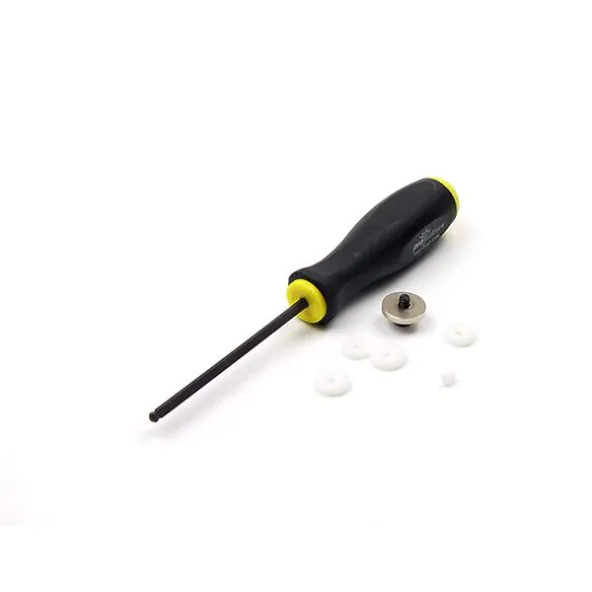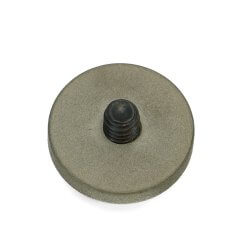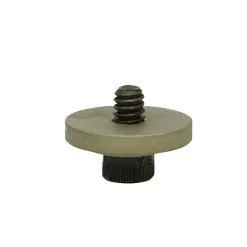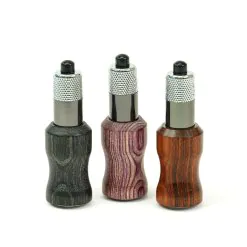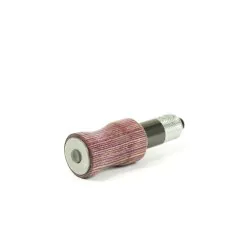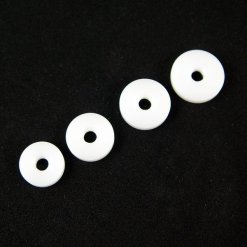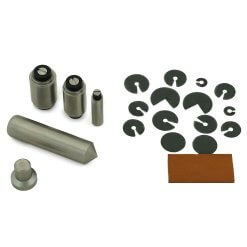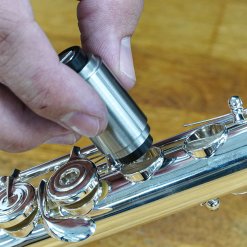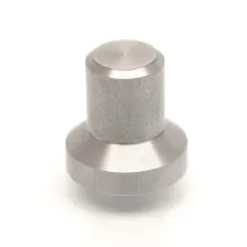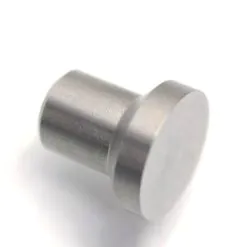Included:
- 1 Diamond Flute Tonehole File
- 600 Grit 4 Plastic Pilots
- 5/32″ Hex Ball End Driver
Schmidt 300 and 600 grit tone hole finishing files are extremely flat, with diamonds embedded into the metal surface. They are designed for applying finishing touches to the tone holes. Screw on a plastic pilot to the face of the tonehole file to locate it within the tonehole.
Use the ball end driver to turn the tone hole file. The ball driver allows the file to <lt a liSle to find the correct level. Be sure to use a drop of light oil to help keep the abrasive from clogging. Use light pressure when finishing up or you will flex the tone hole and it will not come out flat. Mark the tone hole rim with a black felt pen (Sharpie) so you know when to stop as the low spots disappear.
Be sure to dress up the inside & outside diameters of the tone hole rim with chamfering tools to take off any sharp edges or burrs that would cut into the pad and to restore the crown of the hole.
After cutting the tone holes, check their flatness with a flatness gauge like the JLS Lighted Tonehole Flatness Gauge. If a file loads up with metal, use an ultrasonic cleaner. You can also use a needle (or wire brush), but you should do so while viewing with powerful magnification such as a microscope or strong Optivisor.
